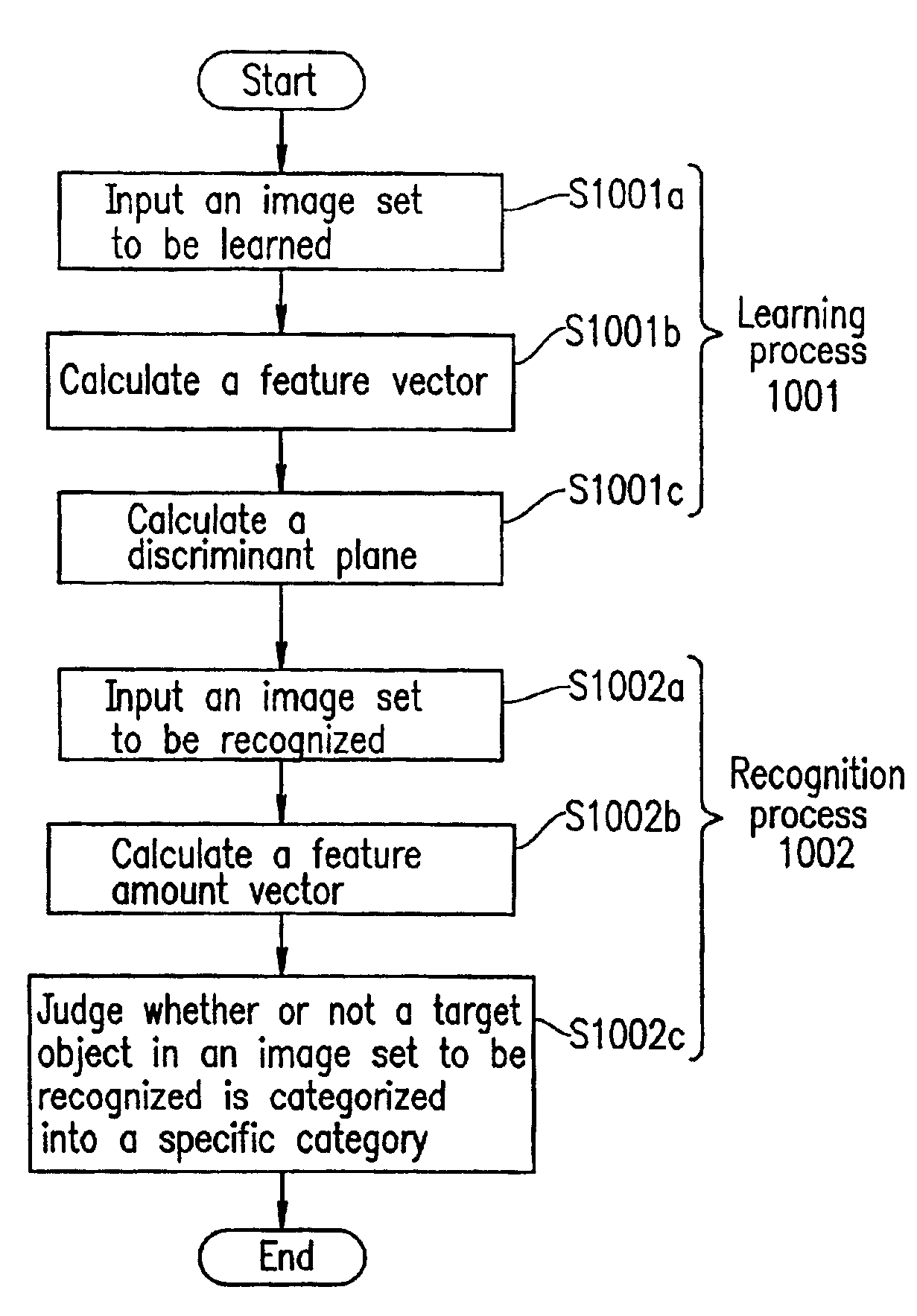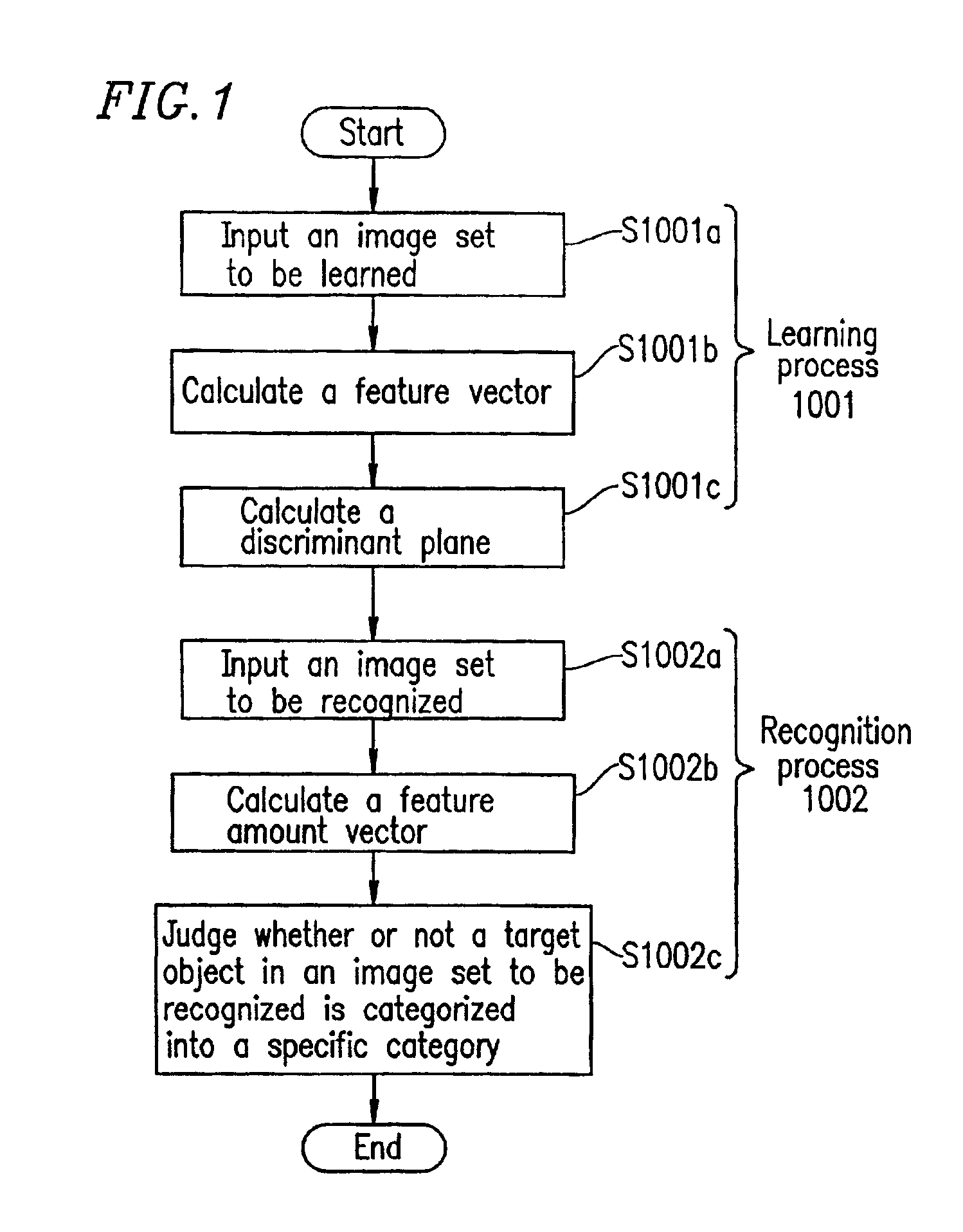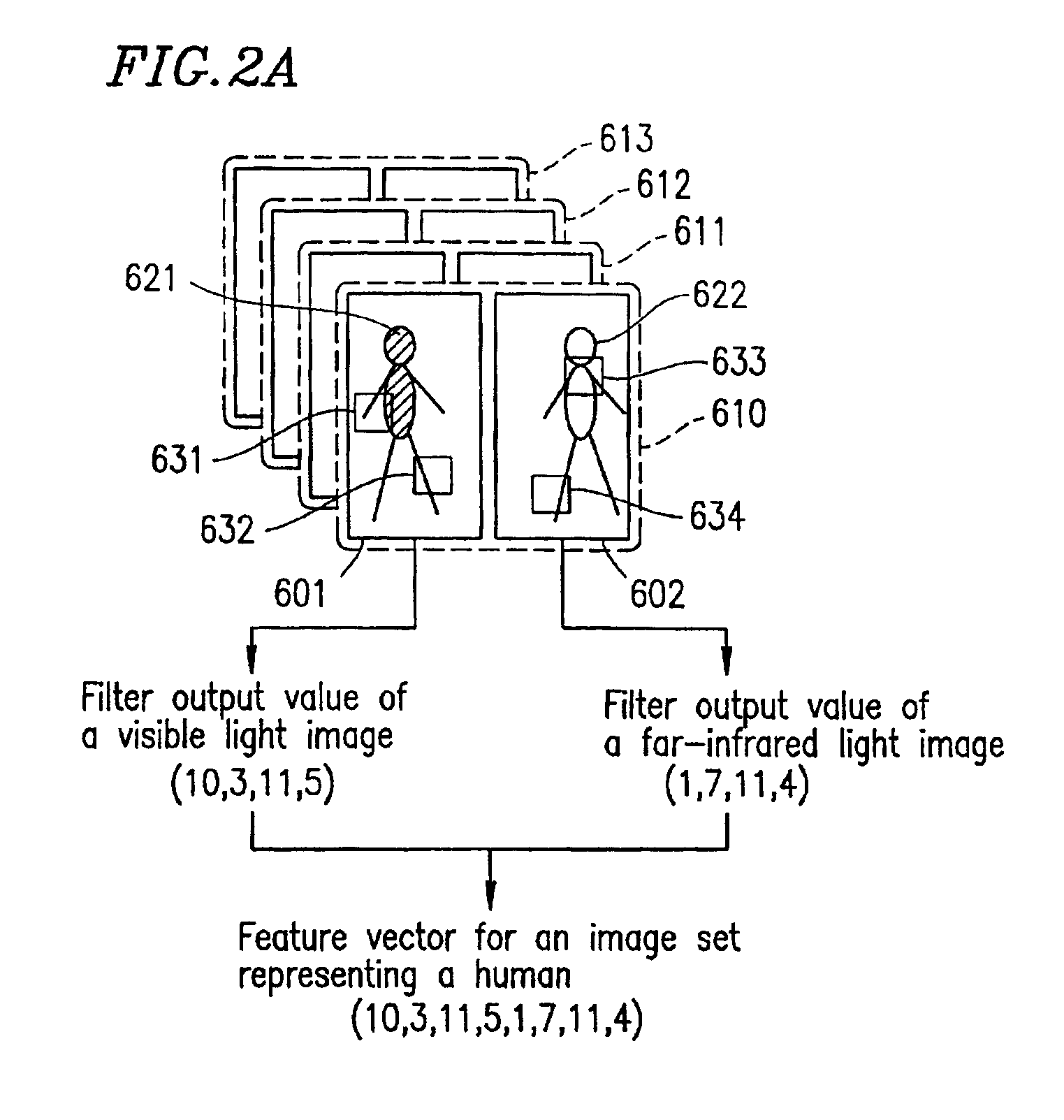Method and apparatus for object recognition
a technology of object recognition and object detection, applied in the field of object recognition methods and methods, can solve the problems of difficult detection of human accurately, complex structure of image capture system, and difficulty in detecting human accurately, etc., and achieves the effect of improving the reliability of target object recognition, high level of recognition reliability, and convenient provision
- Summary
- Abstract
- Description
- Claims
- Application Information
AI Technical Summary
Benefits of technology
Problems solved by technology
Method used
Image
Examples
Embodiment Construction
[0062]Hereinafter, the present invention will be described by way of illustrative examples with reference to the accompanying drawings.
[0063]Firstly, the principle of the present invention will be described below with reference to FIGS. 1 through 5.
[0064]FIG. 1 is a flowchart showing a procedure of an object recognition method according to the present invention. The object recognition method of the present invention comprises a learning process 1001 (steps S1001a to S1001c) and a recognition process 1002 (steps S1002a to S1002c). Hereinafter, the object recognition method of the present invention is applied to recognition of a human, for example. The procedure of the object recognition method of the present invention will be described. The object recognition method shown in FIG. 1 is executed by an object recognition apparatus 1 which is described later with reference to FIG. 6.
[0065]In step S1001a, sets of images to be learned are input to the object recognition apparatus 1. Unless...
PUM
 Login to View More
Login to View More Abstract
Description
Claims
Application Information
 Login to View More
Login to View More - R&D
- Intellectual Property
- Life Sciences
- Materials
- Tech Scout
- Unparalleled Data Quality
- Higher Quality Content
- 60% Fewer Hallucinations
Browse by: Latest US Patents, China's latest patents, Technical Efficacy Thesaurus, Application Domain, Technology Topic, Popular Technical Reports.
© 2025 PatSnap. All rights reserved.Legal|Privacy policy|Modern Slavery Act Transparency Statement|Sitemap|About US| Contact US: help@patsnap.com



